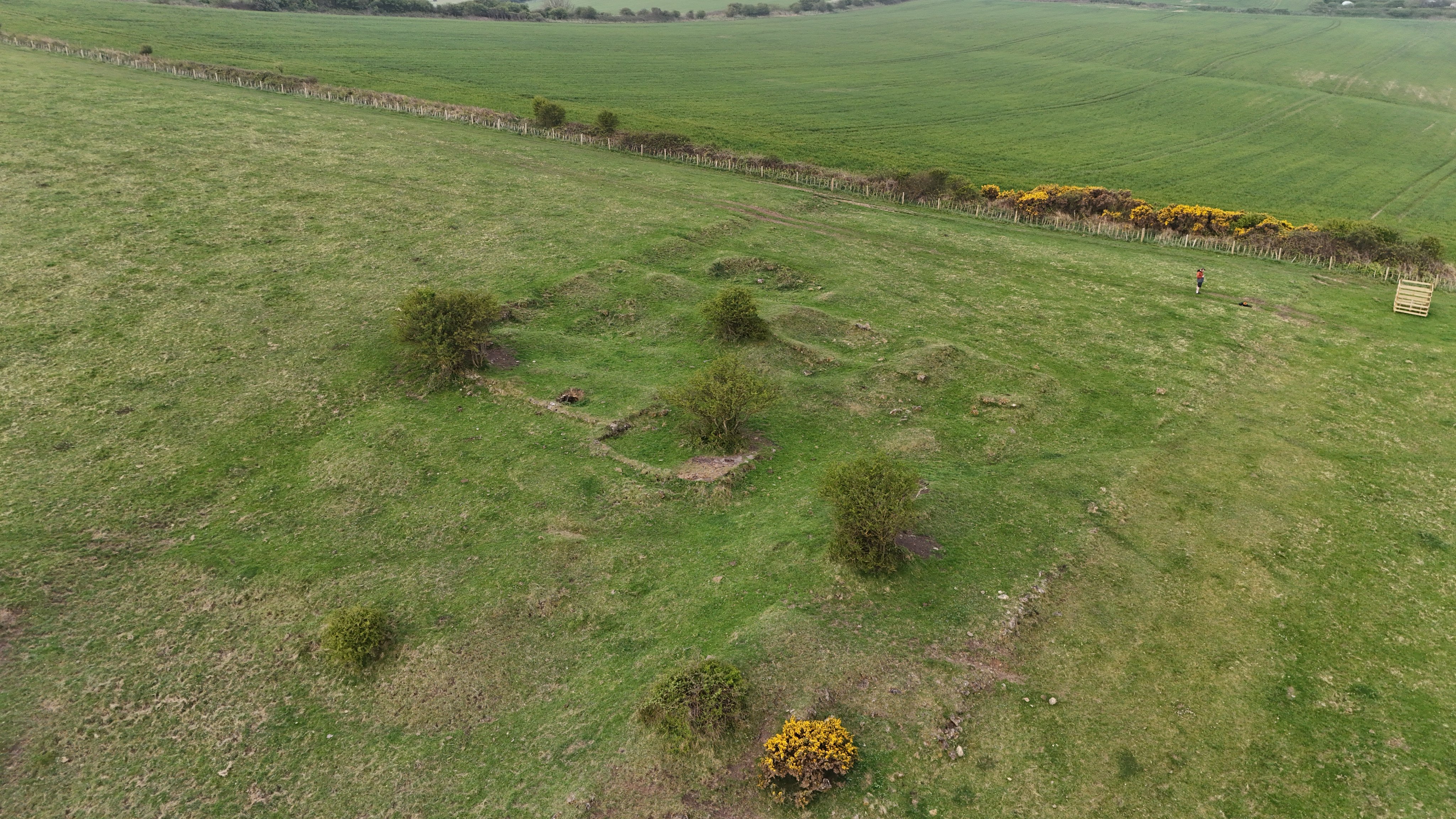
Easington
Blue House, Easington
Last Updated:
8 May 2025
Easington
This is a
Farm
54.803499, -1.317897
Founded in
Current status is
Ruined
Designer (if known):
John Dobson (?)

Only earthworks and foundations are visible
Here's an interesting little ruin that stands on the south cliff of the Hawthorn Dene valley, now little more than earthworks and protruding foundations. There's a good chance it was designed by none other than John Dobson himself.
This was a farm named the Blue House. It was in the north eastern of the quite large Easington parish, and had stood here since at least the 1820s. Who knows why it was named the Blue House - perhaps it was simply painted blue much like the workers cottages on the Town Moor in Newcastle.
Our first reference dates back to 1822, when this farm was put up to let with 50 acres of arable and pasture land as well as featuring a lime kiln - a very common feature to provide fertiliser to spread over the land. At this time it was owned by a Thomas Anderson of the same family we discussed last week who moved into Hawthorn Tower. It appears this was part of the wider estate, and incredibly enough this letting notice was referred back to a "Mr Dobson, Architect, White Cross". Could this well be John Dobson who worked with the Anderson's, and it also poses the question - was this farm designed by Dobson himself when Hawthorn Tower was also built?
Either way, our first glimpse of it is on the tithe plan of 1839 -a modest size house a single field away from the coast. A further tantalising insight is found on the survey of 1861, showing a complex of two buildings with a central yard. The buildings were separated into 6 distinct units - likely stables or pens with a dwelling on the west side. At this stage it was occupied by a Mr George Heads with the farm still incorporating 44 acres.
Now it certainly remained until the 20s or 30s, but any references vanished without a trace long before. By 1948 all we find are the same ruins in situ today, and sadly I can find no photographs at all of this interesting site. The wood to its north still retains the name of the Blue House Plantation.
Listing Description (if available)


Here we see the rare tithe map of 1839 and the Ordnance Survey undertaken in the 1850s. Though primitive, the 1830s plan gives us a healthy insight into the property, its layout and who owned it at this stage. The '1' confirms it is still in the ownership of the Anderson family as per the apportionment, and we can see the fields the estate held thanks to the numbers and the blue boundary - about 80 acres in total.
There were no extensions or redevelopments over the course of the next couple decades, which only confirms our jist that it was freshly built by John Dobson for the Hawthorn Tower estate as it was readily suitable for whoever occupied it. The land also featured a well, with another added in later years.

The house was still standing in the 1890s, and we can see also the Blue House Plantation which is still extant near the burn. There's a set of two wells now, and near the coastguard station is a rocket post. These rocket posts fired a line in bad weather to the ship with a breeches buoy. This would haul victims of the storm up the cliff to safe land via an effective aerial ropeway.

The remains of Blue House today. In view, we see the east and west structures with a narrow yard between. These closest to us were likely stables and workshops, while those closest to me on the shot would have been the main dwelling.
Taken in April 2025.

The earthworks facing east, which reveal a potential well and a separate yard.
Taken in April 2025.

Sadly we have no photographs of the house in situ - this is the closest we have from 1948. There are various interesting features including a circular pit on the west (top) side of the shot, and a large depression in the field to the left. Could this be coal workings? A quarry?
Historic England Archive (RAF photography) raf_cpe_uk_2473_v_5046 flown 9 March 1948
